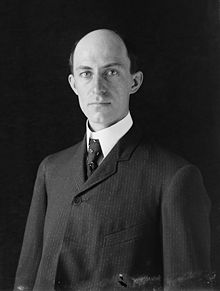If you are a pilot, or if you are not but have a serious interest in history, you owe it to yourself to visit First Flight on the outer banks in North Carolina. This is the place where the Wright Brothers conducted their flight experiments which culminated in mankind’s first flight.
At the turn of the previous century, Kitty Hawk and Kill Devil Hill were, by the most gracious of descriptions, bleak and barren. The wind blew constantly and steady, making the location ideal for the brother’s flight experiments.
The Wrights became interested in flight after their father, Bishop Wright gave them a toy helicopter. The idea of flight intrigued the boys, aged 7 and 11 at the time, for the first time. Later in their lives in the summer of 1896, Orville contracted typhoid fever. Wilbur took care of his sibling and in the process, the two continued their habit of reading.
In August of that year in Germany, Otto Lilienthal crashed one of his many gliders. He sustained severe injuries which led to his death days after the accident. While Orville recovered from the typhoid fever, he and Wilbur read newspaper accounts of Lilienthal’s death.
This, too, further fueled their fire to fly.
Both the brothers, along with their siblings, grew up in an environment which well prepared them for their pursuit of flight.
Orville would later write about the encouragement their parents provided them in “intellectual interests” and other topics which “aroused curiosity.”
Self-educated engineers, the Wrights investigated the problems of flight from a scientific approach. They perfected much of their research in areas which few had ever addressed. The remarkable thing about their work was the fact their theoretical mathematics in aerodynamics hit right on the mark.
In the years leading up to the first flight, the brothers did a great deal of observation, research, and experimenting. They watched the birds fly, developed and flew different kites, analyzed engines and then built their own for the flight. They also produced the first practical “air screw,” or propeller.
All of the brothers’ research and work paid off on December 17, 1903 when they flew the Wright Flyer four times on that eventful day.
Orville Wright won the distinction of becoming the first pilot in the history of the world. His first flight lasted a mere 12 seconds while flying just under 7 mph. The distance of 120 feet is less than the wingspan of many of today’s modern aircraft.
It was this first lift-off from the starting rails that Coast Guardsman John T. Daniels recorded by firing the shutter on the camera Orville Wright pre-positioned before the flight. In addition to Daniels, four others were eyewitnesses to the historic event. On the day of the first flights, the brothers would fly 120 feet, then 175 feet and 200 feet respectively. The last flight, flown by Wilbur, would take the airplane 852 feet over 59 seconds before weather damaged the aircraft on the last flight.
What the brothers accomplished on December 17, 1903 is by definition, the greatest achievement of time. Had they failed, Neil Armstrong would never have walked on the moon 65 years, seven months later.
The incredible thing about the brothers’ first flights is not only did they invent the airplane, they had to teach themselves how to fly.
-30-
© 2010 J. Clark




